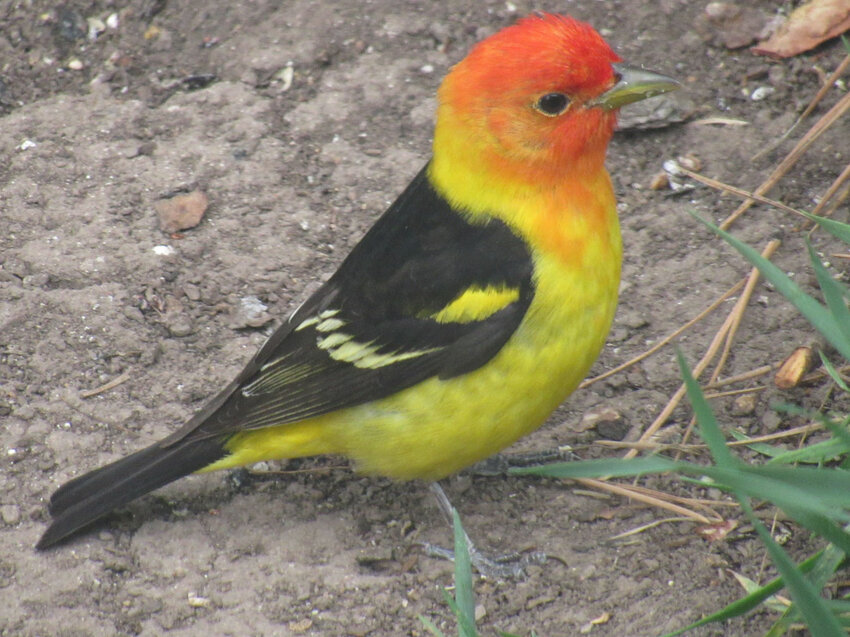
Photo courtesy Charles Martinez
This week’s Bird of the Week, compliments of the Weminuche Audubon Society and Audubon Rockies, is the western tanager.
For a brightly colored vocal bird, this one may be surprisingly difficult to spot. Western tanagers do not typically visit seed feeders, but if you live in a treed area, they may visit your yard in summer for water and suet.
In breeding season, western tanagers are common in fairly open conifer and mixed forests up to 10,000 feet elevation and as far north as the Northwest Territories. Here, they forage in tree tops, deliberately moving among the branches and foliage to feed on a variety of insects. They will also flycatch insects from the air. Later in the season, they add fruits, including those of the hawthorn, elderberry and serviceberry, to their diet.
In breeding plumage, the male is tropical in appearance with his canary yellow body, red head, and black wings and tail. The coloring of his head feathers is produced by a red pigment, rhodoxanthin, rarely found in birds. In a complex cycle, the tanager produces this pigment using a chemical found in pine needles which is eaten by insects then consumed by the tanager. Not as colorful, females and juveniles are yellow-green above, yellow below and lack red coloration.
After breeding season, these tanagers migrate south to Mexico and Central America for the winter. By the end of September, they have left our area. Deforestation, especially in Central America when land is converted to agriculture, has severely impacted the winter habitat of these and other tropical birds. Switching to shade-grown, bird-friendly coffee helps protect these birds by supporting the farmers who retain trees on the land.
Looking for the Smithsonian Bird Friendly Seal or Rainforest Alliance Certification are two ways to find coffee producers who benefit birds.
For information on events, visit www.weminucheaudubon.org and www.facebook.com/weminucheaudubon/.